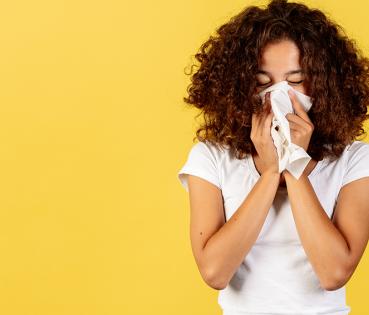
Why are allergies becoming increasingly common?
One in four Spaniards suffer from some kind of allergy, and this figure continues to rise. We discuss the main factors behind what many people consider to be the epidemic of the 21st century.
Allergies have been present throughout history, but in recent years they have gone from being rare to becoming an increasingly widespread health problem. If you live with an allergy or know someone who suffers from one, you are not alone: in Spain, 6.6 million people suffer from some type of allergy, which is an increase of 42.3% since 2016, according to the Spanish National Health System.
This trend continues to rise, and the World Allergy Organisation is warning that, if this rate continues, by 2050 half the population could be allergic. What is driving this growth? The answer lies in the environment. Air pollution not only weakens the respiratory system but also increases how aggressive allergens are. This is compounded by climate change, which is leading to longer pollination seasons, and changes in our diet. Protecting the environment and adopting a healthier lifestyle benefits our overall health and is also key to curbing a trend that is already affecting millions of people.
What is an allergy?
An allergy is an overreaction of the immune system to substances that, under normal circumstances, are not dangerous. In other words, the body perceives them as a threat and responds in the same way as it would to a germ or virus, even though they are not actually harmful.
Which allergies are the most common?
Allergies can be triggered by a wide variety of agents. Among the most common are:
- Food: milk, eggs, nuts, shellfish, sesame seeds, wheat and soy, among others.
- Pollen: the cause of seasonal allergies. Also known as allergic rhinitis.
- Dust mites: small insects that dwell in house dust.
- Pet epithelial tissue: such as dog and cat hair.
- Prescription drugs: certain antibiotics, such as penicillin, and anti-inflammatory drugs, such as ibuprofen.
- Fungal spores: such as mould.
- Insect venom: especially wasp and bee venom.
Why are there new allergies?
Allergies are linked to the environment in which we live, which is why there can be occasional outbreaks when products come onto the market that contain preservatives that have not been previously used. There are also a growing number of cases of allergies to animal epithelia because we have more pets. According to the Spanish Clinic of Allergology and Clinical Immunology, the introduction of certain foods at an earlier age has contributed to the increase in food allergies. Currently, 11% of patients who come to that clinic suspect they have an allergic reaction to some type of food.
Do allergies disappear over time?
In the case of food allergies, many disappear during childhood, especially around the age of four or five. However, respiratory allergies, such as allergic rhinitis and allergies to certain medications, tend to be more persistent and become a lifelong problem.
The increase in allergies in recent decades is a worrying phenomenon that reflects changes in our environment and lifestyle. Factors such as pollution, climate change and dietary changes are contributing to more and more people developing some form of allergy. Prevention and research play a key role in the quest to find solutions to help curb this trend and limit the adverse impact allergies have on our lives.




